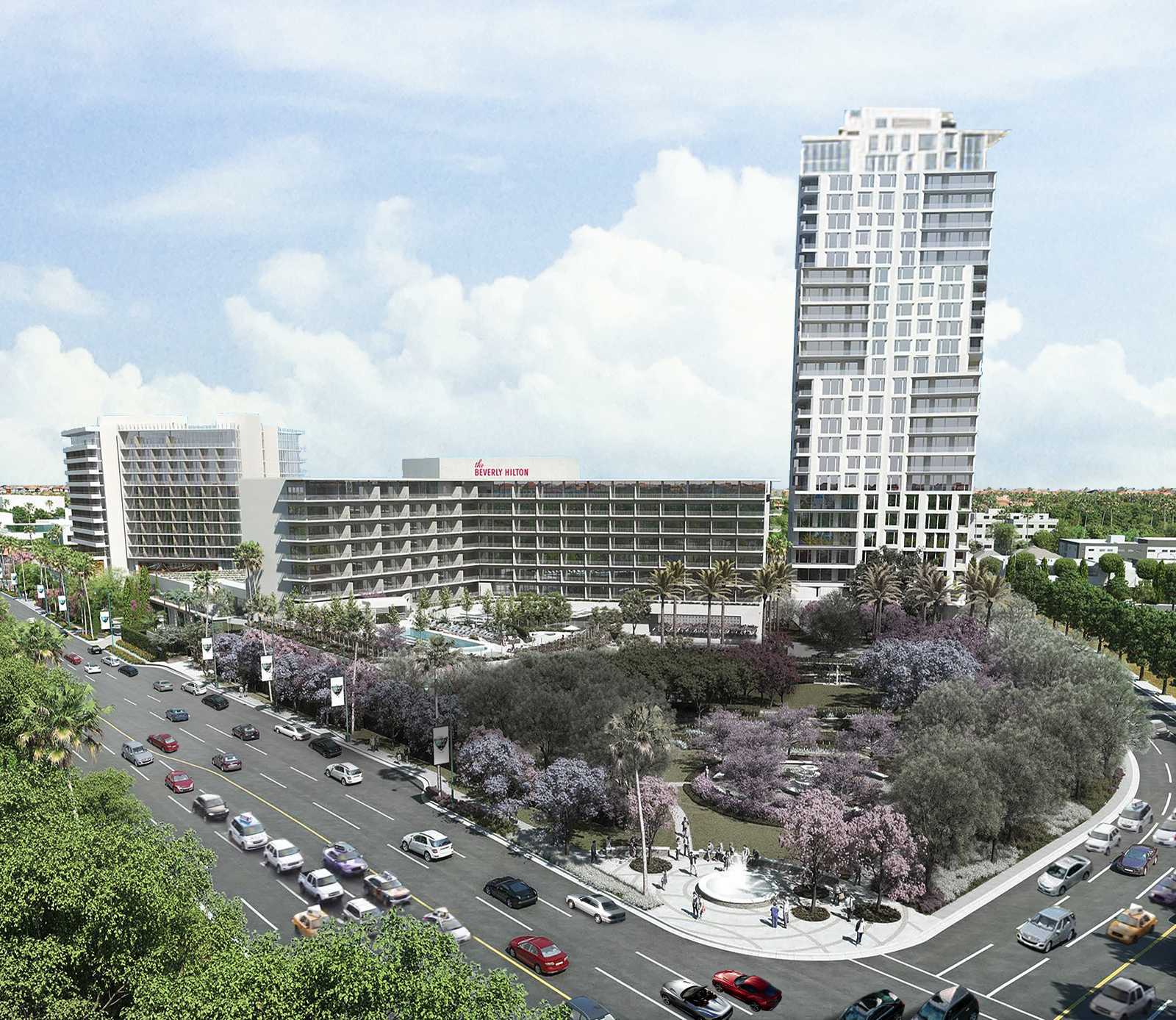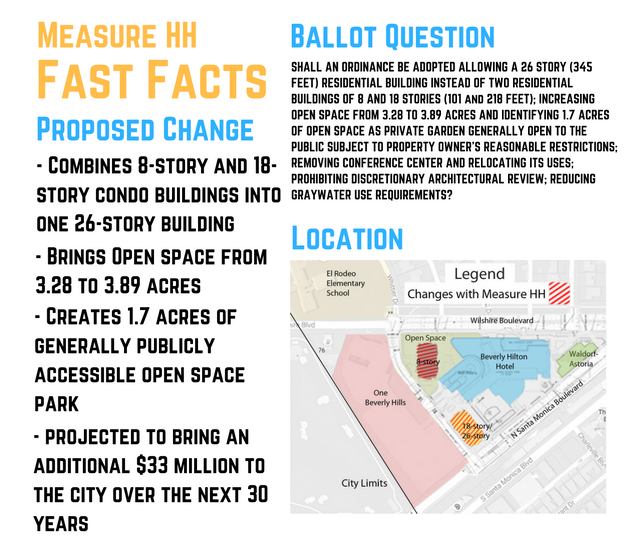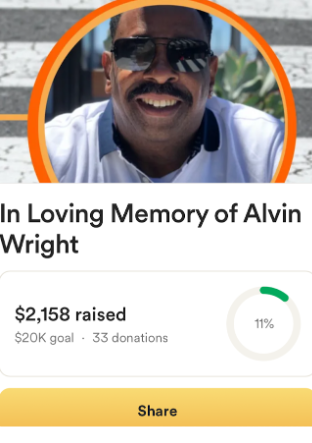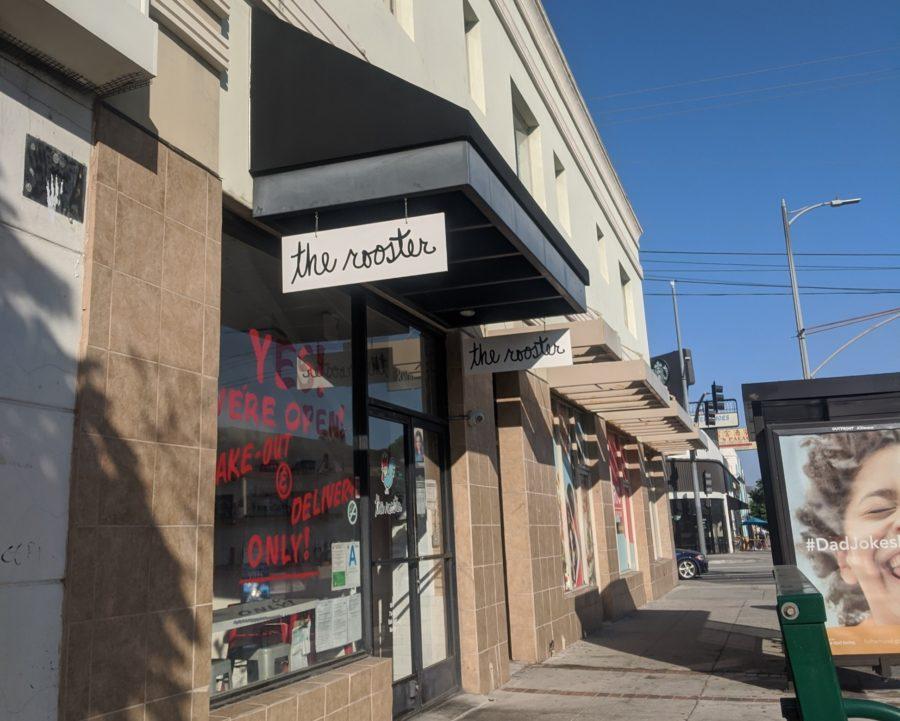Ben Dahan staff writer
Isaiah Freedman sports editor

Originally published in volume 90, issue four on October 28.
Residents of the city of Beverly Hills have been deeply divided the last couple months over the passing of the Hilton Condominium Tower Initiative, commonly known as Measure HH.
The developer behind the initiative, Israeli-born owner of the Beverly Hilton Beny Alagem, obtained enough signatures in March to add the measure to the Nov. 8 ballot. The initiative would amend the development plan of the Hilton property, approved in 2008 as Measure H, in a plethora of ways.
Measure H, officially known as the Beverly Hilton Specific Plan, squeaked through with 129 votes, .82 percent of the total cast, in 2008, making an exception to the city’s General Plan to allow the Hilton’s revitalization project, which includes the creation of the Waldorf Astoria and the two condominium buildings.
The changes, known as Measure HH, include combining the two 18- and 8-story condominium buildings, into one 26-story, 345 foot condominium tower, designating 1.7 acres as a generally publicly accessible park, reducing the required amount of recycled “graywater,” and incorporating hotel facilities, including a pool and restaurant, into the conference complex while avoiding the typical city review process and going directly to the residents.
“This is about building the best possible project for Beverly Hills residents, and for the beloved Beverly Hilton property that will ensure its future for years to come,” Alagem said.
John Mirisch, mayor of Beverly Hills and ardent opponent of Measure HH, along with the Beverly Hills City Council, has chosen to officially oppose the measure.
“The majority of the council is recommending that residents vote no on HH,” Mirisch said.
If Measure HH is not passed, the development will stick to the plan that was approved in 2008.
“It is not my vision that needs to be implemented. It is whatever the residents will vote for. We want to share it with all the residents,” Alagem said.
Condo Combo
The major change from the 2008 plan is the consolidation of the two buildings into a highrise, with the same number of condos, on Santa Monica Boulevard and Merv Griffin Way. The measure stipulates that an additional 30 feet of rooftop accessories can also be added.
Alagem claims he amended the original proposition to include one large building instead of two smaller ones due to complaints fielded by parents of the adjacent El Rodeo Elementary School for fear of the building, on Wilshire Boulevard and Merv Griffin Way, being so close to the school’s campus.
“In the years since our plan was approved in 2008, I’ve thought a lot about it. We have heard a lot from parents of El Rodeo students who have asked if there is a way to remove the 8-story building across from the school. So, we came up with a new plan,” Alagem said.
By going through with the change, the average value per condo would increase from $6.2 million per unit in the two buildings to $7.55 million in the 26-story high rise. After subtracting construction cost, this would increase the overall value by $48 million.
The added value is expected to net the city an additional $33 million in revenue over the next 30 years; however, Mirisch believes the city could be getting a fairer share.
“In my opinion, the city will lose tens of millions of dollars because we will not be able to renegotiate the bad deal we made eight years ago.” Mirisch said.
The height of the tower has been subject to much controversy. It would be more than twice as high as the current tallest building in Beverly Hills, the 14-story, 164-foot Regent Beverly Wilshire Hotel.
Chairman of the Beverly Hills Municipal League Thomas White has his reservations.
“Our organization is opposed to the passage of Measure HH because it will change the skyline of Beverly Hills dramatically,” White said. “[The building exceeding the General Plan height limit] is contrary to the low-rise community standards that Beverly Hills residents support.”
The proposed height of the building is also a daunting possibility to residents.
“I want the development of [the Hilton highrise] to be less obstructive,” long-time resident Gail O’Farrell said.
However, as Alagem and Robert Tannenbaum, former mayor and President of the Beverly Hills North Homeowners Association, point out, the tower would be on the outskirts of the city, and would “blend in well” with highrises from the adjacent Century City.
“It is in the perfect location to have a 26-story structure because of where it is; it is not adversely impacting quality of life, with respect to intruding into any neighborhoods,” Tannenbaum said.
Another long-time Beverly Hills resident, Bill Sheinberg, is supporting Measure HH to pass, citing the rights of the property owner as the incentive behind his vote.
“I recognize that property owners have a sacred right to develop their property, much like I wouldn’t want somebody telling me, without proper basis, how and what to do with my property,” Sheinberg said.
Commercial real estate agent Jay Luchs supports fellow developer Alagem, saying there is an unfair amount of negative reception any time a developer comes forth with a new plan.
“Some people just do not want developers to get their way, no matter the situation. I think what [Alagem] is proposing will be beautiful for the city,” Luchs said.
Park Possibilities
HH, initially submitted as the Open Space and Park Initiative, will add .61 acres of open space, some of which will be used to extend the already-approved 1.25 acre park into a mostly publicly accessible one of 1.7 acres.
“The park will be the most beautiful public space in all of Beverly Hills,” Alagem said. “We envision the park as a one-of-a-kind gathering space for Beverly Hills residents.”
The park will be privately owned and maintained by the Hilton, and is liable to be closed at the discretion of the owner.
Adam Englander, the campaign manager for the Beverly Hills Residents and Businesses for Preserving our City, the biggest adversary of HH, took issue with that fact.
“The so-called ‘public garden’ is actually a private event space that can be closed by the Hilton any time they want,” Englander said.
However, Alagem maintains that the park will always be open with the exception of special occasions, which are usually limited only to the venue spaces.
“The 1.7-acre park created through Measure HH is open to the public, and only 15 percent of the park’s total area can be closed for special events,” Alagem said.
Sheinberg, who is aware that the park may be closed at any time, is not concerned because he has already watched a similar plan bear fruits: the publicly accessible garden in the Montage hotel.
“The park that is north of the Montage hotel, between Montage and Buchon, is public, but it was paid for, granted and maintained by the Montage, and I don’t see this as much different,” Sheinberg said.
According to Alagem, the park will include walking paths, a rose garden, a lemon arbor, an indoor-outdoor restaurant inspired by New York City’s Tavern on the Green, fountains, backgammon and chess tables, and more. It will also host community programs such as yoga and outdoor movie nights.
Englander and Mirisch point to numerous ads aimed at passing Measure H, the plan drawn up in 2008, as saying that there would be a 1.3 acre public garden and 4.5 acres of open space.
“Saying there is going to be no park if the no vote passes directly contradicts the mailings that they sent out eight years ago regarding Measure H,” Englander said.
The new plan will also reduce the required amount of recycled “graywater” that the buildings will use. The new amendment requires that the graywater collected from the 26-story building is used only on the open space landscape and gardens, instead of the 2008 plan which called for the collection and usage in all of the property’s new buildings.
“They say the garden is designed to be environmentally sustainable, but what they don’t say is that they are reducing their graywater requirement [from the 2008 proposition],” Englander said.

City Circumvention
The new amendment would not need to go through the same city review process, which consists of public hearings in front of the Planning Commission and City Council, and compiling an environmental impact report, as Measure H did in 2008.
Alagem’s direct appeal to the residents is unprecedented, which has ultimately led to detractors frustrated with his approach in the passage of Measure HH.
“It’s a circumvention of our process. There’s a process that we have, sometimes it may seem laborious, but it is there to protect the residents and the community,” Mirisch said. “I think that [avoiding it] is fundamentally wrong.”
However, Alagem states that going straight to the residents coincides with the fact that the initial plan was rigorously reviewed and approved in 2008.
“First, we already went through the city process in 2008 that culminated with the City Council approving the project. Then there was a referendum, and Beverly Hills residents became the ultimate deciders when they voted to approve our plan in 2008,” Alagem said about Measure H. “In reconfiguring the plan, I felt it was best to go directly to the residents.”
The examination process was extensive. Nineteen hearings, 109 conditions and 32 pages of mitigation measures were poured over. Additionally, two individuals working with the city are closely monitoring construction.
“This was very unique; the Hilton was the most vetted process in order to get the entitlements that [it was approved for in 2008],” Tannenbaum said.
However, some believe that the changes to the 2008 plan are too substantial for the same review process to be applied to what is presented in Measure HH.
“They went through the process for a very different project. They would have to provide a new or supplementary environmental impact report for this project,” Mirisch said.
In addition, Mirisch believes that Alagem is going directly to residents as a way to avoid the typical process.
“This is not the way land use decisions should be made. If they want to do whatever they want to do, let them go to the back of the line and let them go through the process like all the rest of us,” Mirisch said.
If passed, Alagem’s unprecedented process could encourage other developers to do the same.
“It sets a bad precedent for the future,” White said. “If approved, other developers could try to emulate the same approval [process] and if that should occur, our skyline and density will change forever.”
However, Tannenbaum believes that Alagem appealing directly to residents is the best possible way to proceed.
“Now the Hilton is going directly to the people; what more democratic way can you possibly proceed? This is a vote of the people,” Tannenbaum said.
2008 Debate
Measure H was not passed without controversy of its own, however. When the initiative made its way through the city’s process in 2008, it was denied by the Planning Commission.
It was appealed to the City Council, which in a 3-2 vote, decided to approve the plan. The three who voted yes were Jimmy Delshad, Fred Fenton and Linda Briskman.
Even though Delshad is not registered as a lobbyist, the company he founded and presided over, American International Business, has been paid $50,000 by the Hilton for consulting services.
Fenton passed away this year, but his wife, Judie, is a registered lobbyist for the Hilton. Briskman is also advocating for the passage of Measure HH, although she is not a registered lobbyist and maintains that she is not being paid for doing so.
According to the city’s “revolving door” lobbying ordinance, elected city officials who voted on a land use project not allowed to represent the actors of those projects for compensation to the city.
Shortly after the City Council decision, residents of Beverly Hills garnered enough signatures on a petition to pose the question on a city-wide referendum.
Challenging the close win were claims that at least 500 of the yes votes were fraudulent, and not from residents of the city.
“I feel that something was wrong, something phony was going on,” attorney Larry Larson, the treasurer of the Residents Right to Decide, an organization against Measure H, said.
After a five month long voter verification investigation by Larson and his colleagues, he handed off his findings to the Los Angeles District Attorney’s Office, which conducted its own months long investigation.
The DA concluded that there was not sufficient evidence to prove that the 559 “unqualified” voters intentionally and willfully committed voter fraud, and chose not to attempt to prosecute any of them.

Campaign and Controversy
One of the major combatants to Measure HH is Wanda Beverly Hills Properties LLC, a subsidiary of the Chinese development giant, the Wanda Group, which is building its own $1.2 billion condo/hotel development: One Beverly Hills.
Wanda’s project, which was approved by the city council on Oct. 20, 2016, is separated from the Hilton property by Merv Griffin Way, the narrow road that will serve as the entrance for both developments.
The neighbors have been tangled in an ongoing dispute over each other’s development plans for several months.
The Hilton has interjected itself into many of the public discussion over its competitors’ project, including showing up to many of the public city commission hearings of the project.
In turn, Wanda Beverly Hills, with financial loans from East Lakeshore Parcels, an affiliate company, has poured in $1.2 million into the Beverly Hills Residents and Businesses for Preserving Our City, an anti-HH group.
“I do not know why the Wanda Group has spent so much time and money opposing our campaign and spreading misinformation about Measure HH,” Alagem said.
Englander, the campaign manager for the anti-HH group, and his father, Harvey, of Englander Knabe and Allen PR are both registered lobbyists for Athens BH Development, LLC, Wanda’s partner in the One Beverly Hills Project.
Both sides have spent a lot of time, effort and resources for the upcoming vote.
Alagem and his affiliate companies have spent approximately $6.4 million on the campaign to get the measure to pass, as of Oct. 9. Mirisch and Englander have claimed that he may end up spending $1,000 per vote.
“Elections should be won and not bought. It’s polluting our democracy,” Mirisch said. “My hope is that the good residents of our city will not be deceived by the millions and millions of dollars spent on propaganda.”
Opponents to Measure HH similarly label the campaign by the Residents for The Beverly Hills Garden & Open Space Initiative, the Hilton backed organization, as misinforming the residents.
Despite the the money filtering through from both parties, ultimately, the verdict will all come down to the residents to decide which route they prefer.
“I trust the residents of Beverly Hills to choose which plan they prefer and I will build whatever plan they decide,” Alagem said.




































